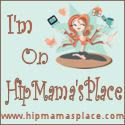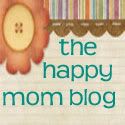Three-dimensional( or 3-D) is a solid or hollow shape. A flat surface of a 3-D shape is called a face.
There are tons of 3-D shapes but we are talking about the most basic ones: cube, sphere, cone, cylinder and prism.
Children do their best learning from experience. So let's provide them with opportunities to explore 3-D shapes in everyday life and through play.
- The first and easiest would be playing with blocks - the chunky wooden ones. When building together point out different 3-D shapes, name them. Later on ask your child to pass you a cube, a cone, a cylinder, etc. Even though they do not know how and why to classify them according their characteristics yet, they recognize how they look already. That's a step up.
- When walking/ driving/ playing point out the objects that have a shape that your child is familiar with already. For example, construction cone, soda cans, soccer ball.
- Show a difference between 2-D and 3-D. Cut out a coupon for a cereal box - that's 2-D, it's flat. then, show the same box of cereal from your pantry - that's 3-D. Examples are endless.
- Now your child is ready for theory. Find a colorful children's book and read it together putting emphasis on the illustrations and characteristics of 3-D shapes. How many faces does this shape have? What shape are they? Are there faces of a different shape? Is there a point?
- To re enforce the theory try building your own 3-D shapes. You'll need toothpicks and modeling clay/play dough. First, make balls out of your clay. They will be connectors for the corners of your 3-D shapes. It should look like. Make a cube, a pyramid, a house(cube+pyramid), prisms.

- Instead of clay you can use marshmallows, and instead of toothpicks kabob bamboo sticks.
- Next you can talk about nets. A net is a shape that a 3-D shape would make if it were flat. This is a website that lets you print out nets for free: http://www.senteacher.org/Worksheet/12/Nets.xhtml.
- Try making 3-D shapes out of them first; then, ask your child to guess what shape a net would make if he/she folded it together.

Try it and you'll be surprised how fast your little one learned his/her 3-D shapes.














































3 comments:
I love your shape ideas. I was wondering if I could link to you r post on my blog. I think others would really enjoy the information you have shared.
Just let me know.
By the way, are you a cedified teacher?
One last thing... stop by one pink fish and pick up a blog award
Thanks so much for the award! Cannot wait to snatch it. LOL. You can link it, absolutely. :)
And...no, I am not a certified teacher, but got that close to being one. Right now my best( and only ;)) student is my daughter.
I'll be over at one pink fish in no time! ;)
Great book for preschool and kindergarten kids on shapes is Dayle Ann Dodds' THE SHAPE OF THINGS.
Fun and easy to share. Helps kids see how shapes make up many things in our world.
Post a Comment